Is Differentiation Really Doable in Math Class?
A MiddleWeb Blog
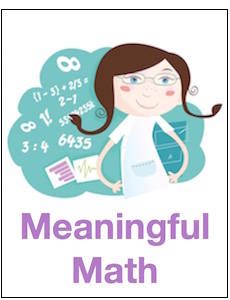
I’m not sure why, but every time differentiation gets brought up I get very defensive. I feel like saying, “I’m already doing the best I can.”
So I let the idea go for awhile. Then I came across a really interesting article in Education Week, “Differentiation Doesn’t Work,” which garnered much interest when it appeared several years ago. Education Week later ran an article espousing the opposing viewpoint, “Differentiation Does, in Fact, Work.”
Reading all the spirited back-and-forth (including many reader comments at both articles) renewed my interest in the subject.
My classroom is so diverse
Every year during a decade of teaching, I’ve seen first-hand the unique and diverse makeup of my classes. I have the students who are bored because “they get it” immediately, and the students who are frustrated because they still “don’t get it.” I have students in the middle that I worry are not reaching their full potential.
And this rough categorizing doesn’t even begin to take into account differences in student interests, personality, home life, etc. It quickly becomes overwhelming.
Still, I think I keep coming back to differentiation because I know it’s important. It makes sense to me that students will do better if we treat them as individuals. I know that’s how I like to be treated.
I needed to learn more
I learned something about differentiation in my teacher prep courses, but not a lot stuck with me. So I started my research by asking other teachers at my school how they defined differentiation. One said it meant “tailoring instruction to meet individual student’s needs.” Another said it is “an attempt to meet each student at his or her appropriate learning level.”
I also read several more articles and two books. I had always had the vague idea that differentiation would mean making different assignments for each student in the class, so I was relieved to read that “differentiation does not involve creating separate lesson plans for individual students for a given unit.”
A leading authority on differentiation, Carol Ann Tomlinson, states that teachers can begin to differentiate instruction “simply by learning more about their students and trying to tailor their teaching as much as they find feasible.” That makes differentiation sound much more doable. (See Ed Week’s Differentiated Instruction: A Primer.)
So how do you actually do it?
The thinking of my colleagues and the articles I read made differentiation seem less scary. Yet, I was still not sure how to actually implement it in my math classroom. For more information I turn to two books, Tomlinson’s How to Differentiate Instruction in Academically Diverse Classrooms and Marian Small’s Great Ways to Differentiate Secondary Mathematics Instruction. (There are actually two related books with this title: see here and here. I read the version by Small & Lin.)
From my perspective as a math teacher I found both books helpful, in very different ways.
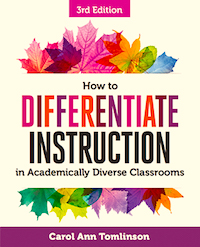
In fact, for me the most impactful part of Tomlinson’s book was when she wrote from the perspective of different students in her own classes and how they experienced what was happening. She broadly categorizes students as advanced learners, learners who struggle, English Language Learners, and learners “in the middle” – and writes about each. I definitely recognized some of my students in her insightful descriptions, and it affected me deeply.
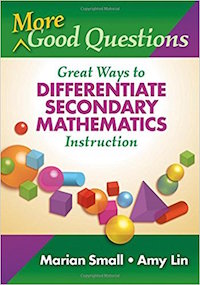
The authors listed three elements necessary to differentiate instruction and two core strategies for mathematics. (They even included a template in the back that I will use for lesson and unit planning in the future.)
The 3 elements are:
1.) Big Ideas –What is the focus?
2.) Prior Assessment – to determine student needs
3.) Choice – related to content, process, or product
And the 2 core strategies for differentiation are:
- Open Questions – A question designed so that students at different places in their math development can all participate in answering it.
- Parallel Tasks – Two tasks that follow directly from the same “Big Idea” – close enough to each other in design that they can be discussed as a class simultaneously. (Perhaps one has more detailed instructions than the other).
There are many ideas common to both books. For instance, both stress the importance of determining each student’s “current level of knowledge, understanding and skill,” as Tomlinson puts it. Don’t just assume all students know something that’s key to the task at hand.
Trying it out in my classroom
Bolstered with a new-found incentive and a workable plan, I was ready to incorporate differentiation in my classroom. I thought: If I try to do it now, at the end of the year, with all the craziness that entails, this should serve as a good litmus test to see if this is practical and workable in my classroom.
[Note: I tried this in my high school Algebra II & Trig class. For middle school math teachers, I think the same basic principles apply. In fact, quite a bit of the content in Small & Lin’s book is aimed at grades 6-8.]
My last unit for this year was Probability and Statistics. I thought I would try out some of the suggestions I found. One suggestion was to check on how the topic was addressed in previous grades, so I started by reading through our state course of study for probability, beginning in 6th grade. I made a list of the big ideas. Then I created an open ended question which I hoped would allow all the students to participate at some level and which addressed one of the big ideas of the unit.

It was very helpful to take the time to read all the standards on probability and gain a better understanding of what I could expect my students to know. And making a list of the big ideas helped me organize my thoughts.
Creating an open ended question was difficult, and I’m not completely satisfied with my end product (but I will keep trying). I ended up giving the students a tree diagram with all the probabilities filled in, and they had to decide on a scenario that might fit the tree diagram. I did notice that all of the students were able to be a part of the discussion.
As a first attempt, it was okay, but I feel sure, with practice, I can create better open ended questions. (Here at the end of the year, I did not have time to create parallel tasks for this unit.)
More time, but well spent
Even my small step towards differentiation took extra time. However, I feel it was time well spent. I don’t typically read through the standards from all the previous grades when I begin to teach a concept, but I will from now on. It was enlightening.
Also, my students and I enjoyed the open ended question I devised. We were all trying to think of different scenarios for the probability tree and almost everyone participated.
Here’s a big takeaway: I’ve begun to think of differentiation as a lens to examine my instruction as opposed to it being just something else I have do or feel like I’m supposed to do.
Like most endeavors, the effort to differentiate raised additional questions:
- What does a really effective open-ended question look like?
- How do I create good parallel learning opportunities that “scaffold” differently?
- How do I accurately access my students’ “knowledge, understanding, and skill”?
These are questions that I will continue to try to answer as I work on my units over the summer.
Some final thoughts
At this point, I do think differentiation is achievable in my classroom to some degree. I also think that the current grading structure most schools adhere to will make certain aspects of differentiation difficult or impossible.
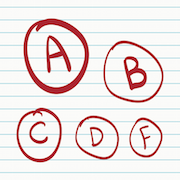
All that said, to the degree I can get to know my students, and plan for meaningful lessons, and try to push my students a little out of their comfort zones, I will try to do so. If anyone has any suggestions, or more clarity on this topic, please share!

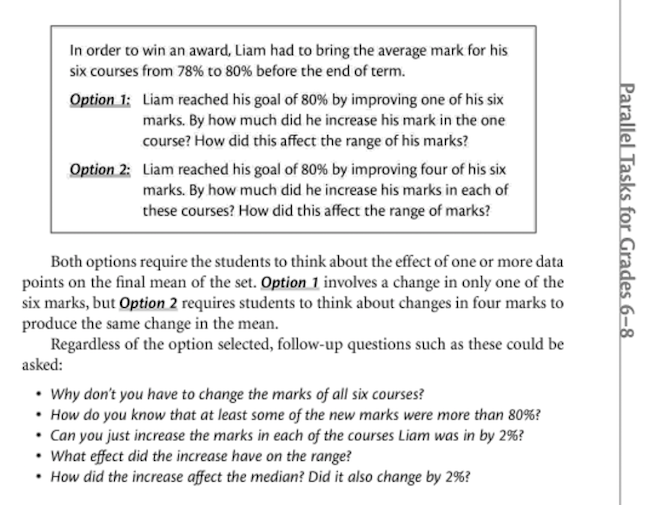






























Have you read teaching to what students have in common by Daniel Willingham and David Daniels? Are you aware that Tomlinson’s own research concluded differentiation was challenging to implement and found little evidence of it being used long-term.
The question is also not does it work but rather does it work better then the other thing we could be doing?